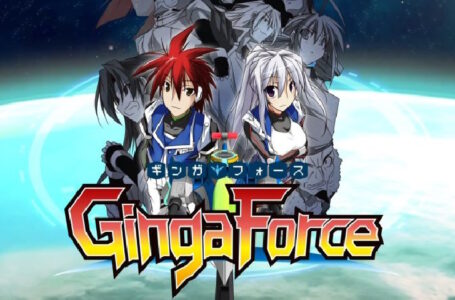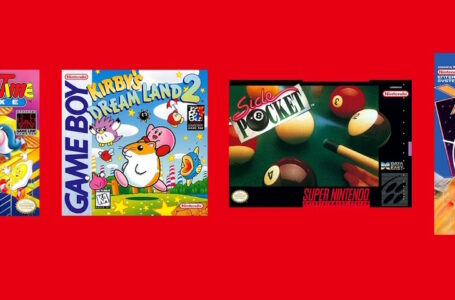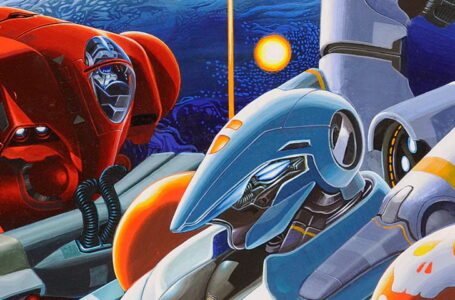Blissful Death: the varied blasting of Super Earth Defense Force
Super Earth Defense Force is a shoot ’em up from Jaleco that should be on your radar if it isn’t already. And it’s super-easy to get hold of and play officially today, too — not only is it part of the Nintendo Switch Online Super Nintendo Entertainment System app, but you can also play it on Evercade as part of the Jaleco Collection 1 cartridge that came out a few months back.
It should probably be noted before we go any further that despite the name, this game has absolutely nothing to do with D3 Publisher’s long-running series of third-person action titles. It is, however, a marvellous game in its own right.
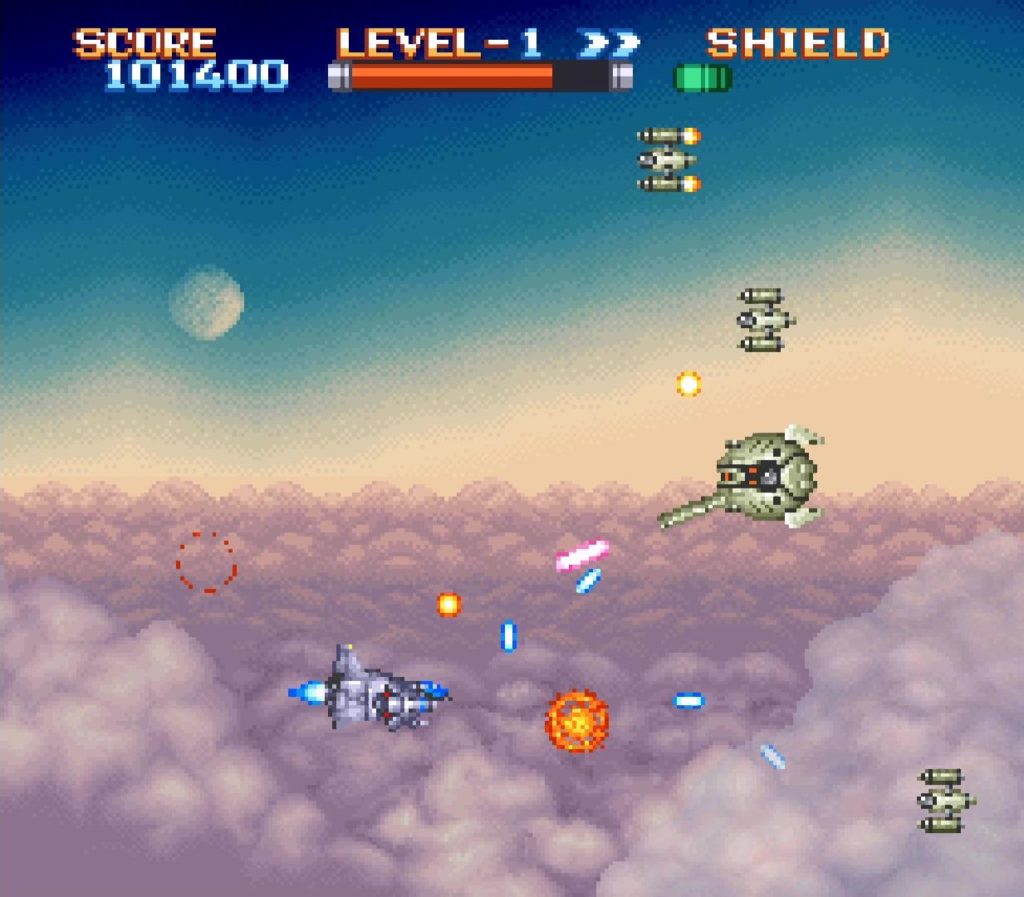
Super Earth Defense Force originated as a 1991 arcade game simply called Earth Defense Force. The narrative runs that in the year 20XX, the Earth is attacked by a spacefaring monarchy known as the Azyma Empire (also known as AGYMA in some localisations), who are bringing a flagship known as the Orbital Satellite Buster to bear on our planet.
Naturally, as is always the case in situations like this, a concerted defensive effort is completely out of the question for some reason, so the only possible solution is to send the newly developed XA-1 and 2 spacecraft into combat on behalf of the Earth Defense Force. EDF!
The Super NES version, which is what we’re concerned with today, tweaks the story slightly; it is revealed that the Azyma forces have established a base on the dark side of the moon, and are developing a secret weapon there. I think you know what comes next.
The game did well in the arcades; Japan’s Game Machine magazine listed it as being the eleventh most successful arcade unit of the year, but its Super NES incarnation attracted somewhat more mixed reviews.
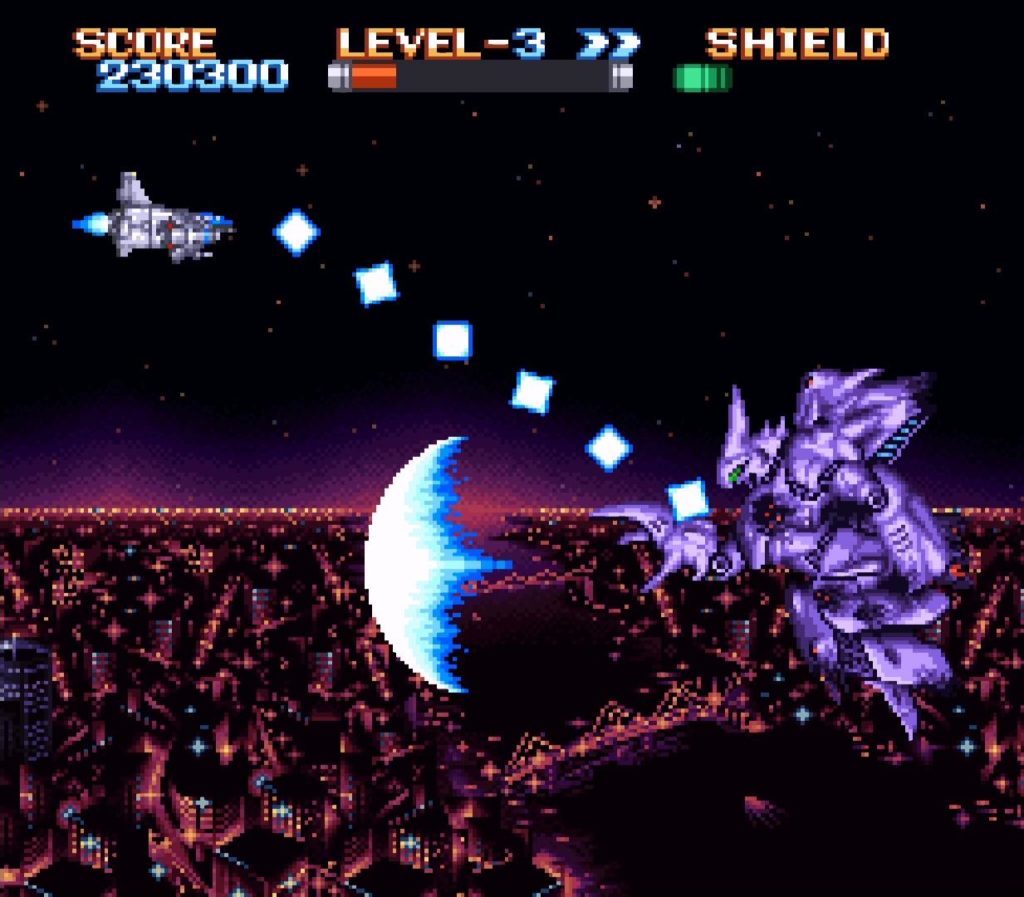
Part of the reason for this may be the fact that during the late ’80s and early ’90s, there was a certain amount of shoot ’em up fatigue in evidence from both consumers and critics alike. Because shoot ’em ups had been around in one form or another since the very earliest days of gaming, a lot of people had started to develop the opinion that gaming should have “moved on” and “grown up” from what was seen at the time as a rather mindless genre of gaming
Of course, as the enlightened gamers we are today, we know that the shoot ’em up is a genre that has continued to evolve and change over time, with some of its most exciting works hailing from the 16-bit age — and that in most cases, it’s anything but mindless. And, as it turns out, Super Earth Defense Force is a great example of what was so special about this genre on 16-bit platforms.
Super Earth Defense Force kicks things off by prompting you to pick one of eight different weapons to use. This had been seen before in a number of other shoot ’em ups — several installments in Konami’s Gradius series allow players to pick a “loadout” of possible power-ups prior to starting the game — but rarely had it made such an impact on gameplay as it does in Super Earth Defense Force. It’s not an exaggeration to say that each of the eight weapons turns Super Earth Defense Force into a very different game — and as a result the game is suitable for a wide range of ability levels.
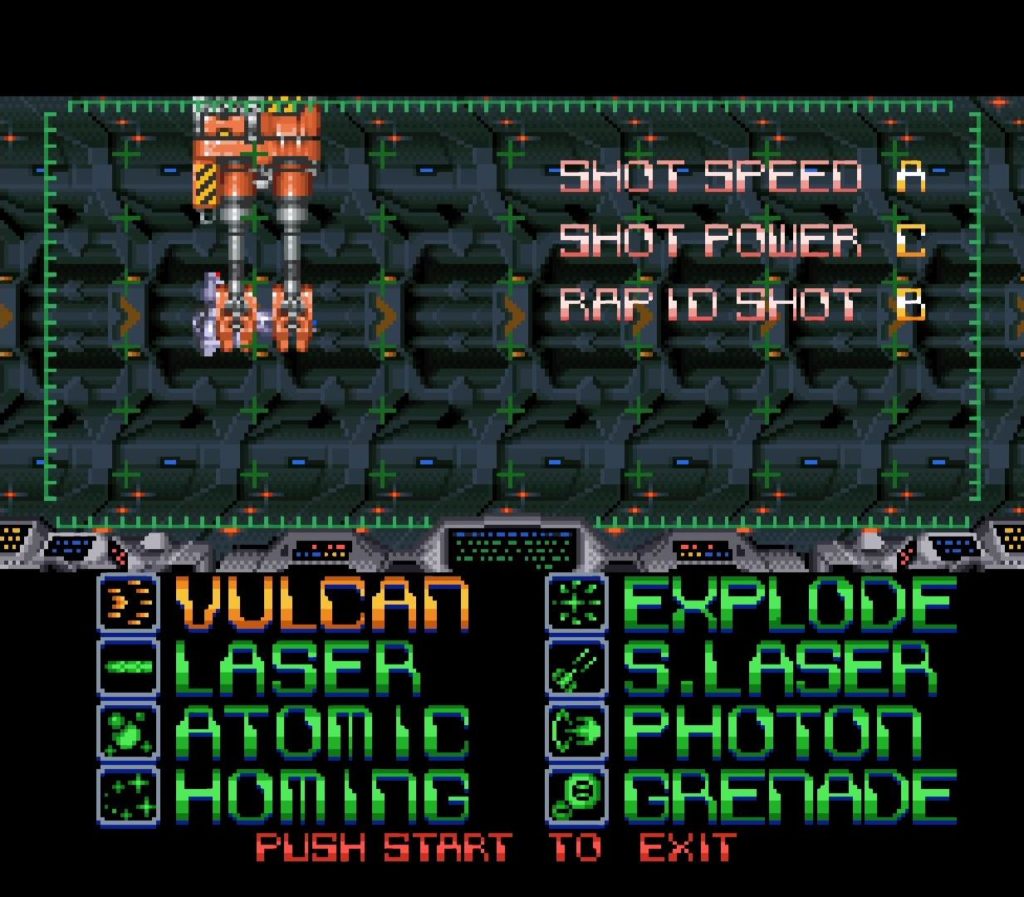
The “homing” shot, for example, is one that can pretty much be held down constantly without thinking, so that the player can simply focus on avoiding incoming enemies and their shots. This makes it ideal for beginners.
By contrast, the “photon” option simply charges up while you hold the fire button, requiring manual release for every shot; it does, however, pierce through enemies and deal considerable damage, meaning you have to make every shot count. As you might expect, this is a setup that is much more suitable for veteran players who have learned the levels and the best time to fire off these powerful blasts.
Regardless of the weapon you pick — and this can be changed between every level or when you use a continue, it should be noted — Super Earth Defense Force makes use of an interesting approach to power-ups. Rather than showering the player with collectibles, it instead makes use of an RPG-style experience and levelling system.
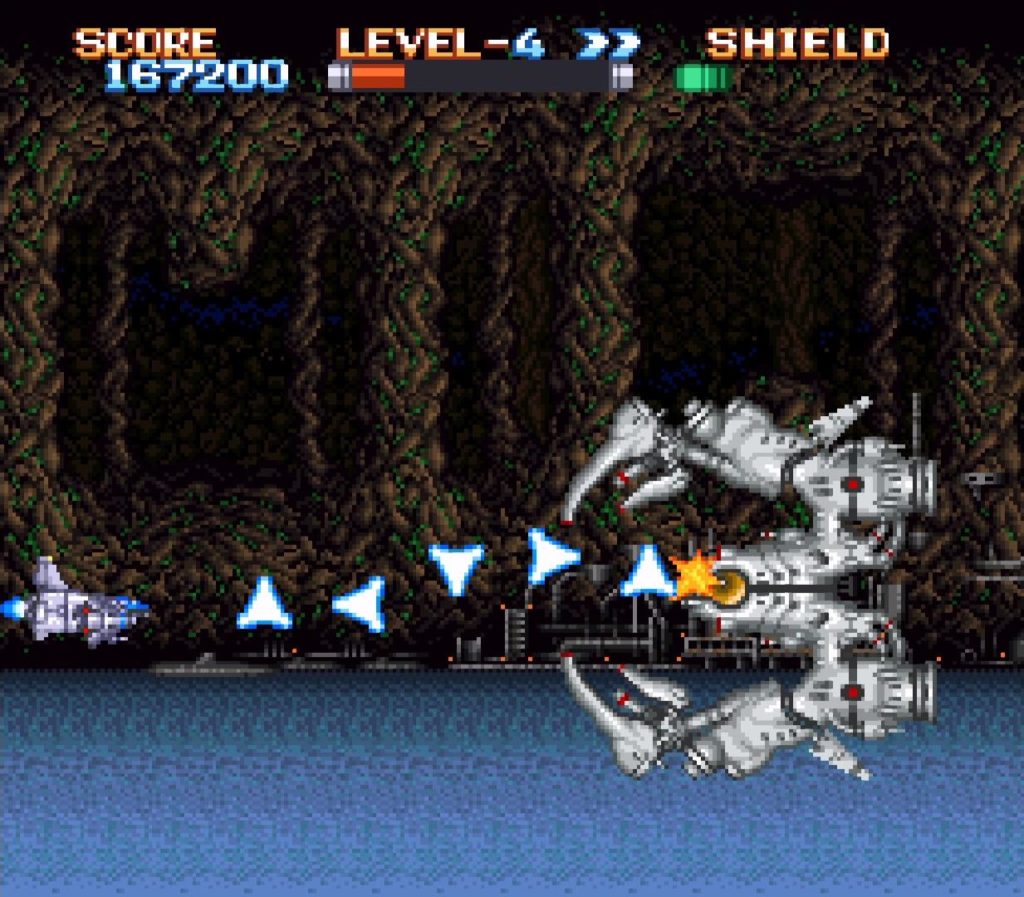
Blasting enemies adds to a bar at the top of the screen, and when the bar is full the player’s current weapon increases in level. The exact result of this varies according to the weapon type, but generally speaking you can rely on each new level of a weapon to have some combination of additional power, larger bullets or a greater spread. Pleasingly, the game maintains your experience level even after you continue, so as long as you make a reasonable amount of progress on each credit, you’ll have the opportunity to see more powerful versions of your favourite weapons before long.
Super Earth Defense Force also eschews a conventional lives system in favour of your ship having several shield points. These work similarly to lives in that when you run out of them you’ll have to use a continue, but the main difference is that your ship doesn’t explode or otherwise disappear when you take damage; you simply enjoy a moment’s invincibility and then continue exactly from where you are. In exchange for this relative generosity, however, shield is extremely hard to replenish through earning enough score, and using a continue resets you right back to the start of a stage.
The first couple of times you play Super Earth Defense Force, it will almost certainly kick your ass. It’s a fair but unforgiving game, and it makes it clear early on that if you hope to enjoy any sort of success, you’re going to have to learn its various attack patterns and how to deal with them — both in terms of destroying the enemies using the weapons available to you, and through avoiding the bullet patterns they fling at you.
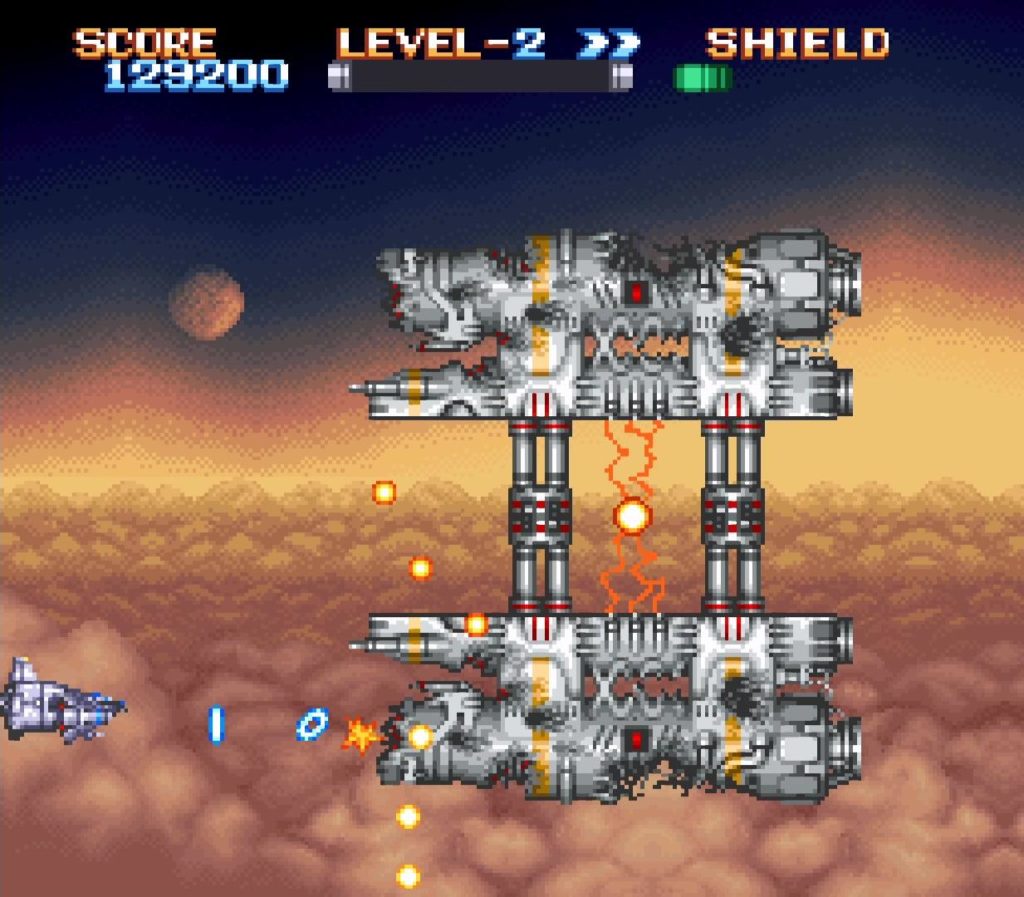
To make memorisation a little easier, Super Earth Defense Force does feature a number of recurring enemy attack patterns that put in an appearance in multiple stages. These are punctuated with new types of enemy that keep you on your toes — but there’s usually something familiar to latch on to, even when you’re taking on a new stage for the first time.
The game places quite a strong emphasis on powerful enemies that take a fair amount of damage to defeat; these effectively act as mini-boss encounters throughout the stages, but they often throw popcorn enemies at you at the same time just to keep things interesting. The bosses themselves, meanwhile, are impressively large affairs with varied and interesting attack patterns; again, there’s a focus on learning the appropriate “dance steps” to avoid their attacks, then unleashing your own personal brand of hell on their weak points during appropriate opportunities.
It’s a satisfying and well-presented game — the music is particularly banging, making use of some excellently high quality instrument samples — and is well worth revisiting from a modern perspective, as there’s a lot more to like here than the relatively mediocre reviews from back in the day might suggest.
And if you ever find yourself feeling like you’ve mastered it, just switch weapons and realise quite how much you still have to learn!
Join The Discussion
Rice Digital Discord
Rice Digital Twitter
Rice Digital Facebook
Or write us a letter for the Rice Digital Friday Letters Page by clicking here!
Disclosure: Some links in this article may be affiliate links, which means we may earn a small commission if you make a purchase after clicking on them. This is at no additional cost to you and helps support Rice Digital!
- Letter from the Editor: passing the torch - June 30, 2023
- Super Woden GP 2 is looking promising - June 30, 2023
- Inti Creates is making a 32 bit-style Love Live action platformer - June 26, 2023





